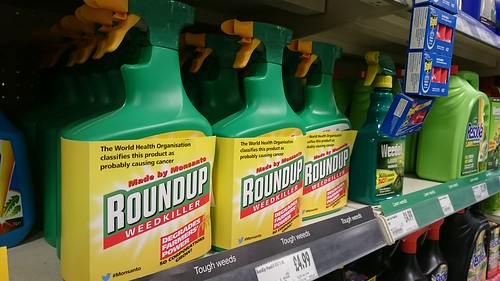Reprinted from www.paulcraigroberts.org
Ecological economists, such as Herman E. Daly, stress that as the external costs of pollution and resource exhaustion are not included in Gross Domestic Product, we do not know whether an increase in GDP is a gain or a loss.
External costs are huge and growing larger. Historically, manufacturing and industrial corporations, corporate farming, city sewer systems, and other culprits have passed the costs of their activities onto the environment and third parties. Recently, there has been a spate of reports with many centering on Monsanto's Roundup, whose principle ingredient, glyphosate, is believed to be a carcinogen.
A public health organization, the Environmental Working Group, recently reported that its tests found glyphosate in all but 2 of 45 children's breakfast foods including granola, oats and snack bars made by Quaker, Kellogg and General Mills.
In Brazil tests have discovered that 83% of mothers' breast milk contains glyphosate.
The Munich Environmental Institute reported that 14 of the most widely selling German beers contain glyphosate.
Glyphosate has been found in Mexican farmers' urine and in Mexican ground water.
Scientific Americanhas reported that even Roundup's "inert ingredients can kill human cells, particularly embryonic, placental and umbilical cord cells."
A German toxicologist has accused the German Federal Institute for Risk Assessment and the European Food Safety Authority of scientific fraud for accepting a Monsanto-led glyphosate Task Force conclusion that glyphosate is not a carcinogen.
Controversy about these findings comes from the fact that industry-funded scientists report no link between glyphosate and cancer, whereas independent scientists do. This is hardly surprising as an industry-funded scientist has no independence and is unlikely to conclude the opposite of what he is hired to conclude.
There is also controversy about what level of contamination is necessary for products adulterated with glyphosate to be classified as dangerous. It does seem to be the case that the concentrations rise with use and time. Sooner or later the concentration becomes sufficient to do the damage.
For this article, the point is that if glyphosate is carcinogenic, the cost of the lost lives and medical expenses are not borne by Monsanto/Bayer. If these costs were not external to Monsanto, that is, if the corporation had to bear these costs, the cost of the product would not be economical to use. Its advantages would be out-weighed by the costs.
It is very difficult to find the truth, because politicians and regulatory authorities are susceptible to bribes and to doing favors for their business friends. In Brazil, lawmakers are actually trying to deregulate pesticide use and to ban the sale of organic food in supermarkets.
In the case of glyphosate, the tide might be turning against Monsanto/Bayer. The California Supreme Court upheld the state's authority to add the herbicide glyphosate to its Proposition 65 list of carcinogens.
Last week in San Francisco jurors awarded a former school groundkeeper $289 million in damages for cancer caused by Roundup. Little doubt that Monsanto will appeal and the case will be tied up in court until the groundkeeper is dead. But it is a precedent and indicates that jurors are beginning to distrust hired science. There are approximately 1,000 similar cases pending.
(Note: You can view every article as one long page if you sign up as an Advocate Member, or higher).






